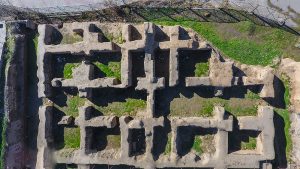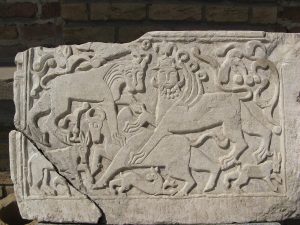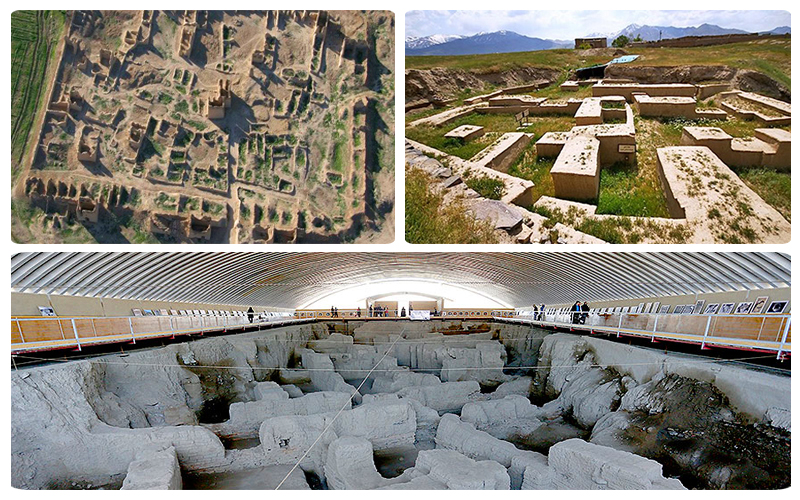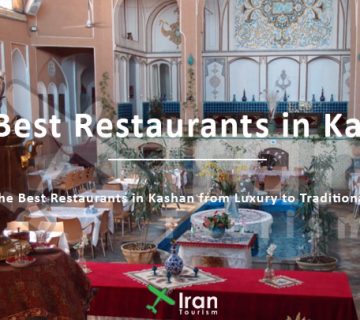Hegmataneh was the ancient name of Hamedan and sat among the old city of Iran that was the settling of Assyrians. The Medes had selected Hamedan as their capital in 700 BC. The historical town is encircled by the lofty Alvand Mountain and has become a tourist destination due to its marvelous historical attractions. Hamedan was on the Silk Road and, because of its strategic situation, was not safe from attacks, so when the Timurid dynasty attacked Iran, Hamedan was abolished sadly.
Some years later, it was occupied by Ottomans; however, Nader Shah e Afshar expelled the raiders and brought back the glory of Hamedan. According to Herodotus, the city was constructed in 7 century BC; if this sentence surprises you, stay with Iran Tourism to discover one of the main attractions of Hamedan named The Hegmataneh Museum and Complex.
Where Is Hegmataneh?
Hegmataneh or Ecbatana refers to an ancient city in Hamedan, and the archaeologists believe that Hegmataneh Hill is home to Ecbatana. The word Hegmataneh is derived from the word Hangmat and is interpreted as a place for gathering. This city was the summer dwelling of the Achaemenid Kings because of its cool weather. The city’s fame and wealth owed to its situation on the Silk Road; it was a crossroad connecting the east to the west. The hill of Hegmataneh occupies 40 hectares of the present Hamedan Province, and its main feature is a dome-like structure dating back to the Zoroastrian Empire. The city’s ruins revealed that Hegmataneh was constructed in the 17th century BC, and the historians discovered the remains of Achaemenid and Medes palaces and buildings. The area uncovered by Charles Fossey 109 years ago includes two columns, the sculpture of a stone lion, and several adobe structures. Iran Travel Guide Center guides you to visit the old city of Hegmataneh.
The Architecture of Hegmataneh Complex

Hegmataneh Archaeological Palace
The complex is Architecturally unique because it resembles a strong and magnificent palace. The ancient architects included seven interconnected courts in the city, and based on the King’s order, the common people’s dwellings were formed around the Hegmataneh complex. According to the interpreted information, each castle had particular usage, and the last castle belonged to the King. The explorations revealed the city’s admiring remains of an organized and developed water channel separated by 3.5-meter wide routes. The archaeologists found a vast yard with giant and splendor towers constructed in particular locations. The process of Hegmataneh’s excavation helped find various ancient pieces, such as a golden epigraph, the matchless golden rhyton, a silver vase, and the golden bowl of Xerxes dating back to the Achaemenid Empire.
The Hegmataneh Museum and Complex
The Hegmataneh Museum and Complex represented the history of Iran’s first empires. It was added to the Iran National Heritage List in 1931 and finally, in 1994, opened its doors to eager visitors. The Hegmataneh Archaeological Palace building was made in 1941 to become a center for acquiring knowledge and teaching students; however, its usage was changed, and nowadays, it serves as a place to preserve the discovered ancient artifacts. In The Hegmataneh Museum, pottery dating back to the 5th millennium BC is the oldest found piece in this area. The central hall and the left hallway of The Hegmataneh Museum and Complex display 200 noteworthy items such as stone coffins, vases, epigraphs, the stones remaining from the Safavid Era, the gravestones from the Seljuk dynasty designed with Kufic scripts, a silver plate, and a stone column among others. The Hegmataneh Museum and Complex are divided into two parts; in one section, you can observe the legacies of the Achaemenid Empire, Sassanian Era, Parthian Empire, and the first millennium BC and the first millennium AC. The second section of this one-story building illustrates the items of different Islamic eras. Hegmataneh Museum and Complex is a place to learn about the whole history of Iran, from the birth of the first empires to their fall.
How to Go to The Hegmataneh Museum and Complex?

The Epigraph in The Hegmataneh Museum
Hegmataneh Archaeological Palace is situated in the heart of Hamedan on Ecbatana Avenue; you can reach your destination quickly. You may use public transportation to join The Hegmataneh Museum and Complex because it is close to the main square of Hamedan, Imam Khomeini Square. Visiting The Hegmataneh Museum and Complex lasts four or five hours. However, your journey in this ancient city may stretch to seven hours, so be prepared for a prolonged walking around The Hegmataneh Museum. When you arrive at Hegmataneh, close your eyes for a few seconds and imagine the ancient men and women working on their farmlands and preserving the area to be conveyed to the next generations. The Hegmataneh Museum and Complex narrate the story of Victories, defeats, developments, and progressions.
What Are the Best Hotels Near Hegmataneh Archaeological Palace?
Hegmataneh Archaeological Palace is close to some comfortable hotels, such as Baba Taher Hotel, a five-star place; Parsian Hamedan Hotel, a four-star resting area; and Parsian BuAli Hotel, which is a three-star hotel. The two-star Alisadr Tourist Hotel and Morvarid Suite and other options welcome you with an open arm and take you to the glorious times of the Achaemenid Empire.
What Are the Close Attractions Near The Hegmataneh Museum and Complex?
The ancient city of Hegmataneh is close to some attractions, such as Stephen Gregory Church, which is 400 meters from the church. The Mausoleum of Baba Taher is the gathering place for poetry lovers and is 1.8 km from The Hegmataneh Museum and Complex. Qorban Historical Tower remains from the seventh century and is 3.6 km away from The Hegmataneh Archaeological Palace.

the Hegmataneh Museum in Hamedan, Iran
Frequently Asked Questions
What Is the Best Time to Visit The Hegmataneh Museum?
Hamedan is a mountainous city; consequently, it is cold during winter; if you want to explore Hegmataneh precisely, it would be best to join Hegmataneh’s Archaeological Palace during the warm months.
When Is Hegmataneh Archaeological Palace Open to Visit?
The Hegmataneh Museum and Complex welcome you from 9 a.m. to 5:30 p.m. during winter days and from 9 a.m. to 7 p.m. during summer months. The museum is closed on public holidays.
What Are the Best Restaurants Near The Hegmataneh Museum and Complex?
Some of the best restaurants near The Hegmataneh Museum and Complex are Shandiz Haji Restaurant, Shir Sangi Restaurants, Aryaeian Traditional Restaurant, and Choobin Italian Restaurant.




No comment